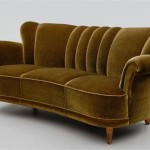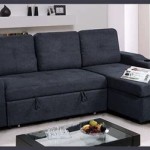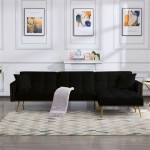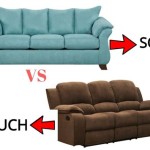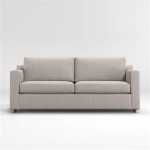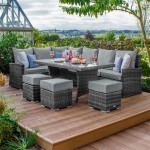Wood Sectional Sofas: A Comprehensive Guide
The wood sectional sofa represents a fusion of comfort, style, and durability, offering a versatile seating solution for a variety of living spaces. Distinguished by its modular construction and the prominent use of wood in its frame or accents, this type of sofa provides an appealing alternative to conventional upholstered pieces. This article will explore the key aspects of wood sectional sofas, encompassing their design considerations, material options, benefits, and maintenance requirements, providing a thorough understanding for potential buyers.
Design and Style Considerations
The design of a wood sectional sofa markedly influences its aesthetic appeal and functionality within a room. The visible wood components can range from slender, minimalist legs to a substantial, fully exposed frame. The style of the wood can be adapted to suit various design aesthetics, including modern, rustic, mid-century modern, and even contemporary. Key considerations in design include the type of wood used, the finish applied, and the overall silhouette of the sectional.
Modern wood sectional sofas often feature clean lines, simplified forms, and a focus on functionality. They may incorporate lighter-toned woods such as birch or maple, finished with a clear coat to highlight the natural grain. The wood components are typically less prominent, serving as subtle accents rather than dominating the design. The emphasis is on creating a streamlined and uncluttered look, blending seamlessly with minimalist interiors.
Rustic wood sectional sofas, in contrast, embrace a more rugged and natural aesthetic. These sofas typically utilize heavier, more substantial wood frames, often constructed from woods like pine or reclaimed lumber. The finish may be intentionally distressed or left with a natural, unfinished appearance to accentuate the wood's inherent textures and imperfections. The overall design often incorporates elements like exposed joinery and raw edges, contributing to a warm and inviting atmosphere.
Mid-century modern wood sectional sofas are characterized by their elegant simplicity and organic forms. Teak and walnut are commonly used, celebrated for their rich color and distinctive grain patterns. The wood components are often sleek and tapered, with a focus on creating a sense of lightness and airiness. The upholstery typically complements the wood tones with fabrics in muted colors or geometric patterns, further enhancing the mid-century aesthetic.
The configuration of the sectional is another crucial design element. Sectionals can be arranged in various layouts, including L-shapes, U-shapes, and modular designs that allow for flexible customization. The choice of configuration should be based on the size and shape of the room, as well as the intended use of the sofa. For instance, a large U-shaped sectional may be ideal for a spacious living room designed for entertaining, while a smaller L-shaped sectional may be more suitable for a smaller apartment.
The upholstery plays a significant role in the overall design of a wood sectional sofa. The choice of fabric should complement the wood tones and the overall style of the room. Common upholstery options include leather, linen, cotton, and synthetic fabrics. Leather offers a luxurious and durable option, while linen and cotton provide a more casual and comfortable feel. Synthetic fabrics, such as microfiber, are often more stain-resistant and easier to maintain.
Material Options and Durability
The selection of wood and upholstery materials directly impacts the durability, longevity, and aesthetic appeal of a wood sectional sofa. Different wood species offer varying degrees of strength, hardness, and resistance to wear and tear. Similarly, the upholstery material should be chosen based on its durability, comfort, and ease of maintenance.
Hardwoods, such as oak, maple, and walnut, are generally considered to be the most durable options for wood furniture. Oak is known for its strength and resistance to dents and scratches, while maple is prized for its smooth, even grain and durability. Walnut offers a rich, dark color and is also highly resistant to wear and tear. These hardwoods are typically more expensive than softwoods, but they offer a longer lifespan and require less maintenance.
Softwoods, such as pine and fir, are more affordable options for wood sectional sofas. Pine is a readily available and relatively inexpensive wood, but it is more susceptible to dents and scratches than hardwoods. Fir is slightly harder than pine and offers better resistance to wear and tear. Softwoods are often used in rustic and country-style furniture, where the natural imperfections of the wood are considered part of the aesthetic.
The finish applied to the wood also affects its durability and appearance. Common finishes include varnish, lacquer, and oil. Varnish provides a durable, glossy finish that protects the wood from moisture and scratches. Lacquer offers a similar level of protection but with a smoother, more refined appearance. Oil finishes penetrate the wood and enhance its natural grain, but they require more frequent maintenance to prevent drying and cracking.
The upholstery material should be chosen based on its durability, comfort, and ease of maintenance. Leather is a highly durable and luxurious option that can withstand years of use. However, it requires regular conditioning to prevent drying and cracking. Linen and cotton are comfortable and breathable fabrics, but they are more susceptible to stains and wrinkles. Synthetic fabrics, such as microfiber and polyester, are often more stain-resistant and easier to clean.
The construction of the frame is also a crucial factor in the durability of a wood sectional sofa. A well-constructed frame should be sturdy and resistant to warping or cracking. Look for frames that are made from solid wood and that are joined using strong interlocking techniques, such as mortise and tenon joints or dovetail joints. The suspension system, which supports the cushions, should also be of high quality to ensure long-lasting comfort and support.
Benefits and Maintenance
Wood sectional sofas offer several benefits over conventional upholstered sofas, including enhanced durability, aesthetic versatility, and the potential for easy customization. However, these benefits are contingent upon proper maintenance and care. Understanding the specific needs of the wood and upholstery materials is crucial for preserving the sofa's appearance and extending its lifespan.
One of the primary benefits of a wood sectional sofa is its enhanced durability. Wood frames are generally more robust and resistant to wear and tear than upholstered frames. This makes wood sectional sofas a suitable choice for households with children or pets, where furniture is often subjected to heavy use. The strength of the wood frame ensures that the sofa can withstand the stresses of daily use without sagging or breaking down.
The aesthetic versatility of wood sectional sofas is another significant advantage. The exposed wood components can be customized to suit a variety of design styles, from modern and minimalist to rustic and traditional. The wood can be stained or painted to match existing furniture or to create a contrasting accent. The upholstery can also be chosen to complement the wood tones and the overall style of the room, allowing for a personalized and cohesive look.
The potential for easy customization is another appealing feature of wood sectional sofas. The modular construction of these sofas allows for flexible configuration and rearrangement. Individual sections can be added or removed to accommodate changing needs or to fit different room sizes. Some wood sectional sofas also offer customizable options for the arms, legs, and cushions, allowing buyers to tailor the sofa to their specific preferences.
Proper maintenance is essential for preserving the appearance and extending the lifespan of a wood sectional sofa. The wood frame should be regularly cleaned with a soft cloth to remove dust and dirt. Avoid using harsh chemicals or abrasive cleaners, as these can damage the finish. For oil-finished wood, occasional re-oiling may be necessary to prevent drying and cracking. Follow the manufacturer's instructions for cleaning and caring for the upholstery material. Regular vacuuming can help to remove dust and debris from the fabric, while spot cleaning can address spills and stains.
Protecting the wood sectional sofa from direct sunlight and extreme temperatures is also important. Prolonged exposure to sunlight can cause the wood to fade or discolor, while extreme temperatures can cause it to warp or crack. Position the sofa away from windows or use curtains or blinds to filter the sunlight. Avoid placing the sofa near heat sources, such as radiators or fireplaces, as these can dry out the wood and cause it to crack.
By carefully considering the design, materials, and maintenance requirements, buyers can select a wood sectional sofa that meets their specific needs and preferences, providing a stylish and durable seating solution for years to come.

Loft Acacia 4pc Wood Sectional Sofa Set Christopher Knight Home Target

Oana 9pc Acacia Wood U Shaped Sectional Sofa Set Teak Beige Christopher Knight Home Target

Buy Teak Wood Sectional Sofa Set 3 Seats Lounger Teaklab

Mackintosh Collection Hardwood Artisans Handcrafted Living Furniture

Frankie Outdoor 9 Piece Acacia Wood U Shaped Sectional Sofa Set With Coffee Table And Cushions Teak Beige Com

Buy Teak Wood Sectional Sofa Set 4 Seats 1 Ottoman Teaklab

9 Pieces Teak Modular Outdoor Patio Sectional Sofa Set With Coffee Table And Cushion Homary

Baixa 3 Piece Wood Modern Outdoor Sectional Sofa Reviews Cb2

Kobe Outdoor 10 Piece Acacia Wood Sectional Sofa Set With Cushions And Fire Pit Teak Beige Dark Gray Com

Solid Wood Sectional


